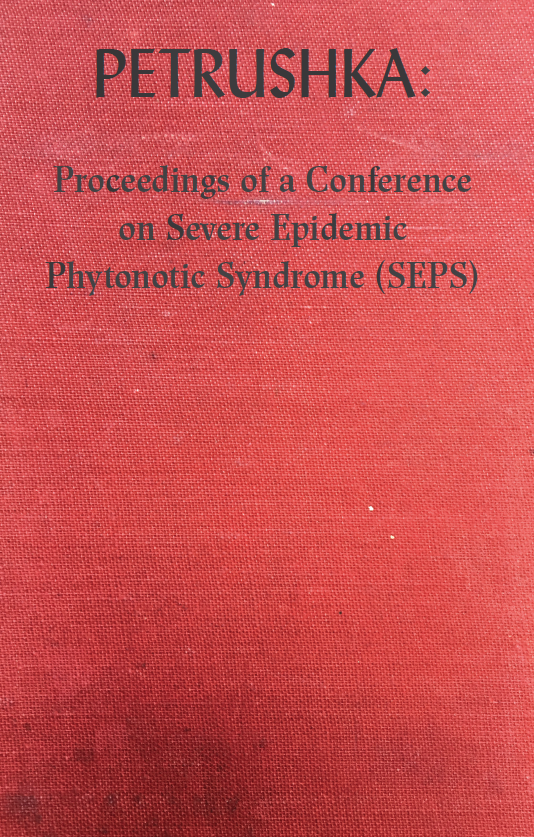Your basket is currently empty!
Petrushka: Proceedings of a Meeting on Severe Epidemic Phytonotic Syndrome (SEPS)

Events
Noon, Friday 15 September 2017: seminar at NYU Center for Experimental Humanities, hosted by Professor Sukhdev Sandhu
6-8pm, Friday 15 September 2017: launch at
Printed Matter, Inc.
231 11th Ave.
New York,
Prof. Sukhdev Sandhu of the Center for Experimental Humanities, NYU, organized a lunch-time seminar on Petrushka. Here he is with Caterina Borelli’s images in the background:

It was attended by students, staff, innocent bystanders and a few undocumented autotrophs. The more cautious participants kept to corners of the room.

That same evening there was a launch at Printed Matter, for which five of the original conference members converged on the venue: Chuck Peters, Elysa Hammond, Stephen Rapp, Mariarosaria Cardines and Peter McCarey.

A few minutes before the reading started the bookstore emptied out; even the staff disappeared. Fear of infection is a terrible thing. We read to an old gent who believed the pandemic was real and who was perhaps too terrified to move. We left him there and went off for a burger.

Chuck Peters, at the microphone, had said that half the topsoil on the planet had been lost in the last 150 years. He looked up and said “I didn’t notice any reaction to that”. Me, I had stopped breathing. Just as you think that Petrushka is only a story, you realize we really are in trouble.
Possible instances of severe epidemic phytonotic syndrome (SEPS)
At a memorial event for the poet Alexander Hutchison at StAnza this year, some rare copies of his books were given away. One contained this:

This is a classic description of phytonotic syndrome, decades before the conference was convened.
Another instance, with a non-fatal outcome, featured in the British Daily Mail:


Petrushka in New York
At the Met, a fairly thorough search for human-plant transformations in non-Ovidian cultures found only one example – though it was big:

(The Michael C. Rockefeller Memorial Collection, Gift of Nelson A. Rockefeller, 1969 (1978.412.1495))
“Carried atop the heads of dancers, the colossal hareiga … reached up to fifty feet (15 meters) in height … the tree-like bodies and tuber-shaped heads of hareiga suggest that they combine features of humans and crop plants, perhaps symbolizing the connection between the ancestors and a bountiful harvest”.
Before the Pandemic
In view of the Hutchison text above we cannot confidently date any event to “before the pandemic”. Nevertheless, this series of images by Caterina Borelli, presented to the conference at Cape Cod, portrays the conflicted relations between humans and autotrophs before SEPS took hold (item 1 of the agenda).

















